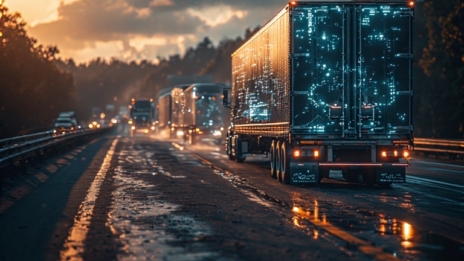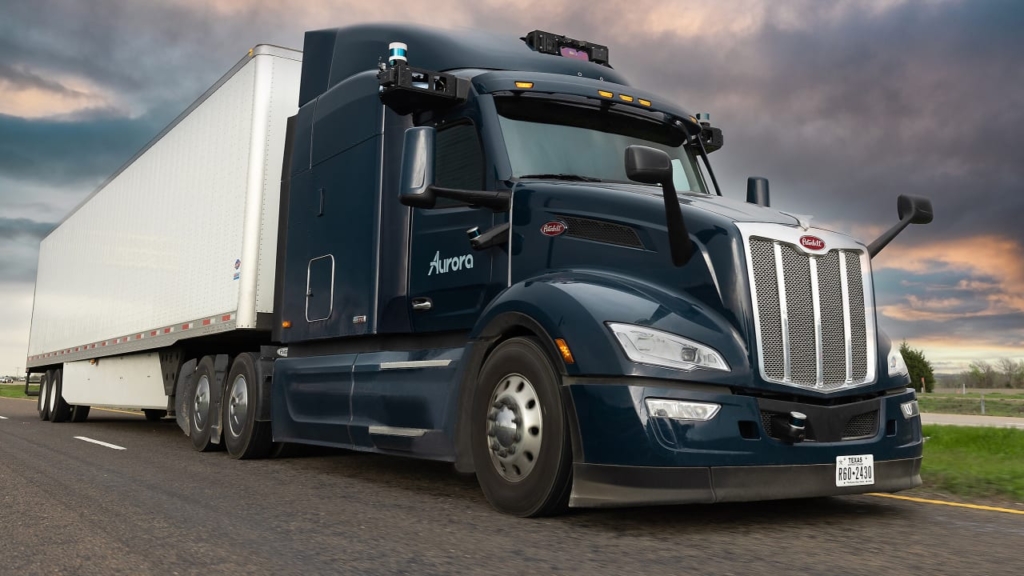
Trucking News 2025: Autonomous Trucks, Safety Setbacks?

The trucking industry, a cornerstone of the U.S. economy, moves over 72.5% of the nation’s
freight by weight, generating nearly $1 trillion in revenue annually. With 10.77 million trucks
and 9.2 million workers, the sector is ripe for transformation, and autonomous trucks are at the
forefront of this change. Promising enhanced safety, efficiency, and cost savings, autonomous
trucks are being tested and deployed by companies like Waymo, Aurora, and TuSimple.
However, safety concerns, accidents, regulatory hurdles, and public skepticism pose significant
challenges. This article provides a comprehensive overview of the current state of autonomous
trucking, including the latest statistics, safety data, setbacks, and the positive and negative
implications, drawing on recent developments and expert insights.
The Current State of Autonomous Trucking
Autonomous trucks, equipped with advanced driver assistance systems or fully
autonomous driving systems, operate at various levels of autonomy, as defined by the
Society of Automotive Engineers SAE. These range from Level 1, is basic assistance like
adaptive cruise control, to Level 5, fully autonomous without human intervention. As of 2025,
most autonomous trucks operate at Level 2 or 3, with Level 4 systems in testing phases on
specific routes.
Waymo Via, for instance, has been testing Class 8 trucks in Texas since 2020,
while Aurora and Plus are piloting Level 4 systems on highways. Over 3.7 million miles were
tested by autonomous vehicles, including trucks, from 2014 to 2018, with companies like
Waymo reporting 835 crashes and Zoox reporting 78, indicating varying safety performance
across fleets.
Safety Statistics and Accident Data
Autonomous trucks can possibly reduce accidents, as human error accounts for up to
94% of crashes, contributing to 1.19 million global traffic deaths annually. Some studies suggest that
AVs, autonomous vehicles, could reduce fatalities by up to 90%, potentially saving 600,000 lives in the U.S. over 35 years if safety improves by just 10% over human drivers.
Waymo’s research shows a 57% reduction in police-reported crashes, with an accident rate of 2.1 incidents per million miles driven compared to 4.85 for human drivers. However, self-driving vehicles, including trucks, have a higher overall crash rate of 9.1 per million miles compared to 4.1 for human-driven vehicles, based on data up to 2021.
Notably, autonomous vehicles are more likely to be involved in rear-end collisions, often as the non-faulty party, suggesting they enhance road safety by avoiding errors like distracted driving.
However, they struggle in specific scenarios, such as turns, they are at a 1.98 times higher crash risk, and dawn/dusk conditions at a 5.25 times higher risk, due to limitations in AI decision-making and sensor performance. From 2019 to June 2024, autonomous vehicle incidents, including trucks and cars resulted in 496 injuries and fatalities, with 49 deaths linked to ADAS-equipped vehicles but only one to fully autonomous systems.
High-profile accidents have raised concerns. In 2018, an Uber self-driving car (not a truck) killed a pedestrian in Arizona, highlighting issues with perception systems misclassifying objects.
Similar challenges apply to trucks, where complex environments like construction zones or
adverse weather test sensor reliability. In 2023, Cruise faced a temporary suspension after a San
Francisco accident, underscoring regulatory and public trust issues.
Positive Impacts of Autonomous Trucks
Autonomous trucks offer significant benefits, driving their adoption despite challenges:
- Enhanced Safety: By eliminating human errors like fatigue or distraction, autonomous trucks reduce accidents caused by the 40.6% of crashes linked to recognition errors (e.g., inadequate surveillance). ADAS features like collision avoidance have already cut heavy truck accidents by over 40%.
- Economic Benefits: Autonomous trucks could generate $300–$400 billion in revenue by 2035, with software and mapping markets growing from $680 million in 2025 to $15.8 billion by 2040. Reduced accident rates could save $20.7 billion annually in U.S. medical expenses.
- Efficiency and Productivity: Operating 24/7 without driver rest requirements,
autonomous trucks optimize routes and reduce fuel costs through “eco-driving.” This increases productivity, especially for long-haul routes, and frees drivers for other tasks. - Environmental Impact: Smoother driving patterns reduce emissions, supporting sustainability goals. Autonomous trucks could also decrease the need for parking infrastructure, freeing land for other uses.
- Improved Mobility: Autonomous trucks enhance logistics by navigating stop-and-go traffic and maintaining safe distances, improving supply chain reliability.
Negative Impacts and Setbacks
Despite their promise, autonomous trucks face significant hurdles:
- Safety Challenges: AVs struggle with complex scenarios like turns, adverse weather, or unpredictable road users (e.g., pedestrians, who cause 80% of intersection accidents). Hundreds of millions of miles are needed to prove reliability, far beyond current testing data.
- Accident Liability: Determining fault in AV accidents is complex. Manufacturers,
software developers, or human supervisors could be liable, depending on the autonomy
level and cause (e.g., software glitch vs. human oversight failure). - Job Displacement: Autonomous trucks threaten the livelihoods of 3.5 million U.S.
truck drivers, with 70% of surveyed individuals expressing concern about sharing roads
with driverless trucks. This could lead to significant economic disruption. - Cybersecurity Risks: AVs rely on over 50 processors, making them vulnerable to hacking
and data breaches. Robust cybersecurity measures are critical but challenging to
implement. - Regulatory Delays: The lack of a unified federal regulatory framework creates
inconsistencies, with states like California and Arizona adopting different approaches. A
2017 U.S. House bill to preempt state authority failed, leaving gaps in oversight. - Public Perception: High-profile accidents, like the 2018 Uber fatality, fuel public fear,
with 43% of Americans uncomfortable with AVs and 75% preferring to drive
themselves. Negative media coverage amplifies safety concerns. - Technical Limitations: Perception systems (e.g., LiDAR, cameras) can misinterpret
objects, and AI struggles with rare scenarios, requiring extensive training data. For
example, early AV systems showed biases in pedestrian detection, though improvements
have been made.

Recent Developments
Recent advancements show progress but also highlight ongoing challenges:
- Waymo Via: Expanded Class 8 truck testing in Texas, integrating autonomous systems
into logistics for Google’s data centers. - Aurora and Plus: Testing Level 4 trucks on highways, with plans for commercial
deployment by 2027. These systems excel in controlled environments but struggle in
urban settings. - Regulatory Efforts: The NHTSA monitors AV testing under its Standing General Order,
but federal inaction has left states to regulate, with California requiring safety
assessments before issuing permits. - Public Backlash: Posts on Tik-Tok, Facebook and X reflect skepticism, with quite a few truckers arguing that autonomous trucks “don’t belong” on roads due to safety concerns and the huge risks of “hacking” or security concerns.
Estimated Timeline for Autonomous Trucks
Experts provide varied timelines for autonomous truck adoption, balancing optimism with
caution:
- 2025–2027: Level 3 systems, combining ADAS and limited ADS, will become more
common on highways, with companies like Mercedes-Benz already deploying Level 3
features in specific conditions. - 2027–2030: Level 4 autonomous trucks are expected to operate on dedicated routes,
particularly highways, with human supervision for complex scenarios like yard
navigation or breakdowns. Aurora aims for commercial Level 4 deployment by 2027. - 2030–2040: Level 4 systems may expand to urban and regional routes, but full Level 5
autonomy remains unlikely due to technical, regulatory, and infrastructure barriers. - 2040–2070: Full Level 5 autonomy could emerge, but some experts estimate a 50%
chance of machines taking over all human jobs, including trucking, within 120 years,
suggesting a long road ahead.
Conclusion: A Promising Yet Perilous Path
Autonomous trucks in some ways hold transformative potential for the trucking industry, possibly offering safer roads, economic growth, and environmental benefits. With a 57% reduction in crash rates and billions in projected revenue, the technology is advancing rapidly.
However, higher accident rates in specific scenarios, cybersecurity risks, job displacement concerns, and regulatory gaps pose significant hurdles.
High-profile accidents and public skepticism, amplified by voices on platforms like X, Tik-Tok and Facebook underscore the need for transparent safety improvements and robust policies.
To realize the benefits of autonomous trucks, manufacturers must address technical limitations,
policymakers must establish clear regulations, and the industry must prioritize retraining
programs for drivers.
By balancing innovation with safety and equity, autonomous trucks can
pave the way for a more efficient and sustainable logistics future, but only if the industry
navigates these challenges.
Sources I used in this article:
American Trucking Associations,
American Transportation Research Institute,
National Highway Traffic Safety Administration
McKinsey Center for Future Mobility,
among others cited.













